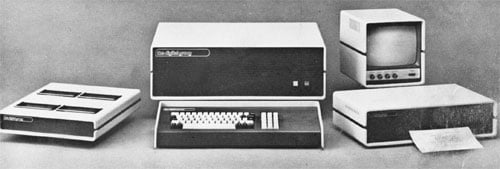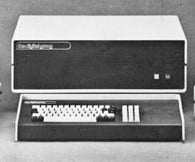
The History of Digital Group: What to know
The Digital Group was a Denver, Colorado-based firm created in 1974 by Robert Suding, a Doctoral student in Systems Analysis of Florida State University, a Latin instructor at a Michigan junior high school, a computer engineer for IBM, and Dick Bemis to market Suding-designed microcomputers. Their microcomputers have been among the most advanced accessible at that moment.

The two guys and their spouses formed “The Digital Group” a month later (commonly seen in advertisements as “the digital group” — all lowercase characters). The new company’s first product was “Packet #1,” a set of blueprints for improving the Mark-8 that included plans for a video and cassette interface, as well as ROM listings for a warm boot and software drivers to make everything work. There were also listings for a basic operating system.
The Digital Group was the first to manufacture a still-popular Zilog Z80 CPU system. Still, they also offered hobbyist-oriented devices based on the MOS 6502 and Motorola 6800 processors. Its products were centered on an interchangeable board and component technology that allowed consumers to upgrade their CPUs without rebuilding their peripherals.
The Founding of Digital Group: How it happened
The digital group of Denver was among the first makers of microcomputer equipment. However, because they committed to a set of views about computers and microprocessors that were typically in conflict with the rest of the industry, this group of amateurs and designers, headed by Dr. Robert Suding, could be regarded as more of a sect than a firm.
The Digital Group (or “the digital group”) thought that the industry would continue to create new microprocessors. The computer hobbyist ought to have a personal computer system that allows him to switch from one processor to another without losing his investment in the whole system.
They realized that memory, interfaces, software, and peripherals accounted for the majority of the computer equipment investment. As a result, they reasoned that if you buy a CPU that soon becomes obsolete (as they all do), any memory and peripherals developed expressly for that CPU will become obsolete as well. Dr. Robert created the digital group systems to be independent of the chip design used by the manufacturer.
At the CPU card level, complete system compatibility was maintained. Memory, I/O, and peripherals were all thoroughly unaffected by the CPU used. They provided architectures from four different CPU manufacturers: The Zilog/Mostek Z-80, the Inter 8080, the Motorola 6800, and the MOS Technology 6502.
Digital Group Through the Decades
Phase 1 (1974-1984)
Dr. Robert Suding spotted the Mark-8 Minicomputer on the cover of Radio-Electronics magazine and decided to build one. Dr. Robert created the Digital Group in 1974. A functional hobby computer was an uncommon find. (Made even more unusual by the Mark-8’s intricacies!) Following a successful test, Dr. Suding publicized his accomplishment and his willingness to assist others in doing the same. Many people came to watch the Mark-8 in action, including Dick Bemis.
Phase 2 (1984-1994)
Digital Group went out of business a long time before the rest of the 8-bit S-100 companies did. But unfortunately, not enough amateurs agreed with the group’s views, and the firm died when the pool was depleted. Even dealers who had built their entire company around the system had to abandon it due to non-scheduled deliveries, which drove them out of business.
What Are the Most Important Inventions From Digital Group
Cadillac of Computers
When this system was first released in 1975, Altair system users would spend hours flipping switches merely to see lights blink on their front panels. Owners of Digital Group systems were able to turn on their machines and load an operating system in less than 20 seconds. At 1100 baud, the cassette interface, which came standard with DG systems, loaded programs.
This was roughly four times quicker than any other manufacturer’s tape technology and 10 times faster than paper tape, which was the sole means for loading Micro-Soft BASIC into the Altair system at the time. Of course, you’d need a paper tape reader and an interface to achieve that on an Altair.
Z80 Processor Card
Dr. Suding had finalized the design for the Digital Organization Z80 processor card and had functional systems on exhibit at computer shows within two weeks of the introduction of the Zilog Z80 chip samples, according to a user’s group at the time.
By weeks, if not months, the nearest competitor has been beaten. In contrast, a popular approach was to run advertisements for a concept product and then use the money from customer orders to construct the advertised hardware.
How Did Digital Group Make Money
The concept behind the digital group design appealed to many people, especially hobbyists. Aside from processor interchangeability, the digital group system had several other qualities that set it apart from other early microcomputers. Because all of the startup software was included in a ROM, it didn’t require a front panel with switches and lights.
It featured a video and cassette interface card when most computers still used teletypes. It supplied a cassette-based operating system that could use an ordinary, unmodified cassette recorder to function at 110 characters per second when most other systems could only do 30.
It had a crystal-controlled interface that was exceptionally dependable and did not require continuous tuning. The video section featured a 7 by 9-character matrix with 16 lines by 32 characters, including math symbols, special symbols, and the Greek alphabet.








